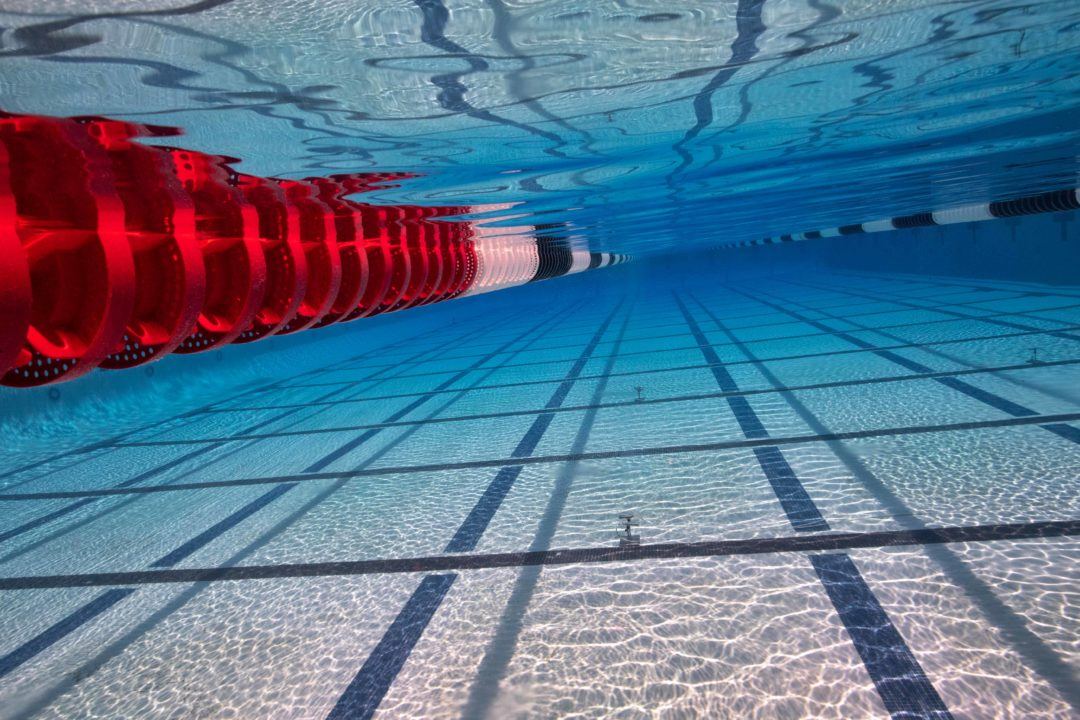With the world shutting down, we’re reaching into our archives and pulling some of our favorite stories from the SwimSwam print edition to share online. If you’d like to read more of this kind of story, you can subscribe to get a print (and digital) version of SwimSwam Magazine here. This story was originally published in the 2019 Spring edition of SwimSwam Magazine.
“Basically, what they do, in a frozen lake, they dig a hole — basically a 25-by-25-meter hole — where they create a pool. We swim there for two days before it gets frozen again,” Diego Lopez said.
This practice is known as ice swimming, and you might see it in the Olympics soon. China’s swimming association announced in 2016 that it would apply to have winter swimming included as early as the 2022 Beijing Games.
SwimSwam caught up with Lopez, who in 2018 completed a major marathon swim on every continent, about his experience as the 2019 World International Ice Swimming Championships. This year’s edition — the third — took place last March in Murmansk, Russia, and is sanctioned by the International Ice Swimming Association.
The air temperature was about 5 degrees Fahrenheit, with the water at 32, Lopez said. The 400 entrants, who were allowed nothing but a traditional suit, a cap, and goggles, could choose to race either 500 meters or a 1000. Lopez did both. He had previously done an “ice kilometer” in Antarctica as the grand finale of his “Continents Seven” adventure.
Lopez, 37, took third in the men’s 30-39 age group in the 500 and won the 35-39 men’s 1000 in 14:23.66, a Spanish record and the fastest time by an American resident. The world record was set by Bulgaria’s Petar Stoychev, 42, at the same meet.
Lopez compared the increasingly diverse demographics of the field with his experience at Worlds in 2017; swimmers represented 34 nations in total.
“People from Russia, Netherlands, Germany — mostly cold countries — but I think more and more people are getting into it because of this Olympic committee study,” he said.
“So you see younger people: I swam the final heat with a guy who’s 20 years old next to me,” he added. “And you know, when I was 20, I wasn’t thinking about swimming in a frozen pool.”
He said the swimmers doing only ice swimming were “training in the Czech Republic during the European winter, and then they go down to Argentina to train during their winter, so they spend the whole year basically training in winter.”
Lopez, a native of Spain, resides in New York and trains through the winter at Brooklyn’s Brighton Beach.
“Basically, I train in the pool throughout the week, and then the weekend I go to the beach and I train in the cold. So you have to train both aspects: the cold and the meters,” Lopez said. “So I do go to the beach, I spend more and more time, and then cold showers, ice baths at home. The week leading into the event, I would say I train even more in the cold.”
Training for ice swimming is a balance of endurance preparation and cold acclimation. When it comes to race day, however, cold training wins out, Lopez said.
“What matters the most in the sport is your ability to perform successfully in extreme conditions,” he said. “So, you know, it’s not only about being in the water — in warm waters — it’s about getting your body used to those conditions to perform well. If I had raced in a normal pool with the same guys, maybe I wouldn’t have won, I don’t know. But basically, you are training to perform well in extreme conditions. So it’s very different than swimming in a warm pool.”
Because of the risks, swimmers are not allowed to dive in or do flip turns. Contestants are also cut off after about 30 minutes in the water.
“When you go into these waters, your extremities become numb, so you cannot feel your hands or your legs anymore because all the hot blood of your body goes to your core just to protect the heart and the basic functions,” Lopez said. “You’re swimming by memory, basically.
“When you are out, your body is not shaking at first. You’re taken to a room-temperature facility, and then your body starts shaking uncontrollably. And that’s basically what they call ‘Arctic blood.’ Cold blood. So basically your blood goes again into your extremities, and it starts mixing with the cold blood, and that is very uncomfortable.”
That sensation lasts for half an hour, Lopez said.
“I think Antarctica was a little bit harder just because you are in the middle of nowhere — there are icebergs, there are penguins. They tell you, ‘Take off your clothes and get into the water,’ and you’re like, ‘Oh, what have I done?’”
The Antarctic kilometer was more of a traditional open water swim, so the 1000 in Russia did take longer because of the open turns at end of the pool,” Lopez said. “Mentally, however, the swim was much easier, because safety was less of an issue: You see that there are people around you that can rescue you if anything goes wrong.”
But the mental challenge is part of what keeps Lopez going.
“The passion, to test your mental and physical strength in those conditions, I really like that,” he said. He also swims to raise awareness for the Ocean Recovery Alliance, which works to combat plastic pollution in the ocean.
In the foreseeable future, Lopez will get back to warm-water swims.
“I’m going to do a double crossing of Gibraltar, so Spain to Morocco and back,” he said casually. “And some other channels, probably.”
